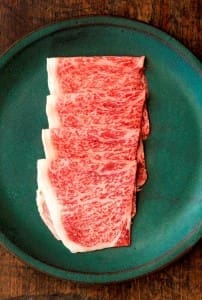RENOWNED for its soft texture and characteristic rich and juicy flavour, a study appearing in the Journal of Agricultural and Food Chemistry says scientists have detected several key ‘odourants’ that contribute to the alluring aroma of Wagyu beef.
Wagyu beef’s distinctive marbling, juiciness and silky taste are enhanced by its sweet aroma, known in Japan as ‘wagyuko,’ which some have compared to coconut or fruit.
In recent times, scientists have been trying to nail down what makes Wagyu aroma distinctive from other types of beef. In one study, researchers found that one particular compound appeared to have an important influence on the meat’s aroma. But the samples used in that experiment were not cooked at the optimal temperature.
To get a better sense of which odourants are responsible for Wagyu’s distinctive aroma, Japanese university researcher Satsuki Inagaki and colleagues decided to try a different approach.
The researchers conducted an aroma extraction dilution analysis comparing Matsusaka beef (from the prefecture of the same name – one of the highest regarded regions for Wagyu production in Japan) and grassfed Australia beef. The team heated the samples to about 175 degrees C to simulate optimal cooking conditions.
Using gas chromatography techniques, they detected ten newly-identified compounds in the Wagyu beef aroma, including one previously associated with cooked chicken, that had an egg-white odour.

While some compounds were unique to the Wagyu beef, others were also found in the Australian grassfed beef aroma sample. Researchers say they likely don’t smell alike because of the differing amounts of these constituents in the two meats.
The most potent odourants of Wagyu beef were compounds known as aldehydes and ketones, which are known as the degradation products of polyunsaturated fatty acids that are more abundant in Wagyu than conventional beef. Dominant among these was trans-4,5-epoxy-(E)-2-decenal, which is known to be the oxidation product of polyunsaturated acids, such as linoleic acid and arachidonic acid, that are a significant feature of Wagyu fatty acids.
The researchers said the study not only clarified which compounds are the main odourants in cooked Wagyu, but also helped confirm that particular types and amounts of unsaturated fatty acids in the beef play a key part in the aromatic process.
Journal reference: Journal of Agricultural and Food Chemistry – Satsuki Inagaki et al. Identification and Characterization of Volatile Components Causing the Characteristic Flavor of Wagyu Beef (Japanese Black Cattle), (2017). DOI: 10.1021/acs.jafc.7b02843 Click here to view full study.

